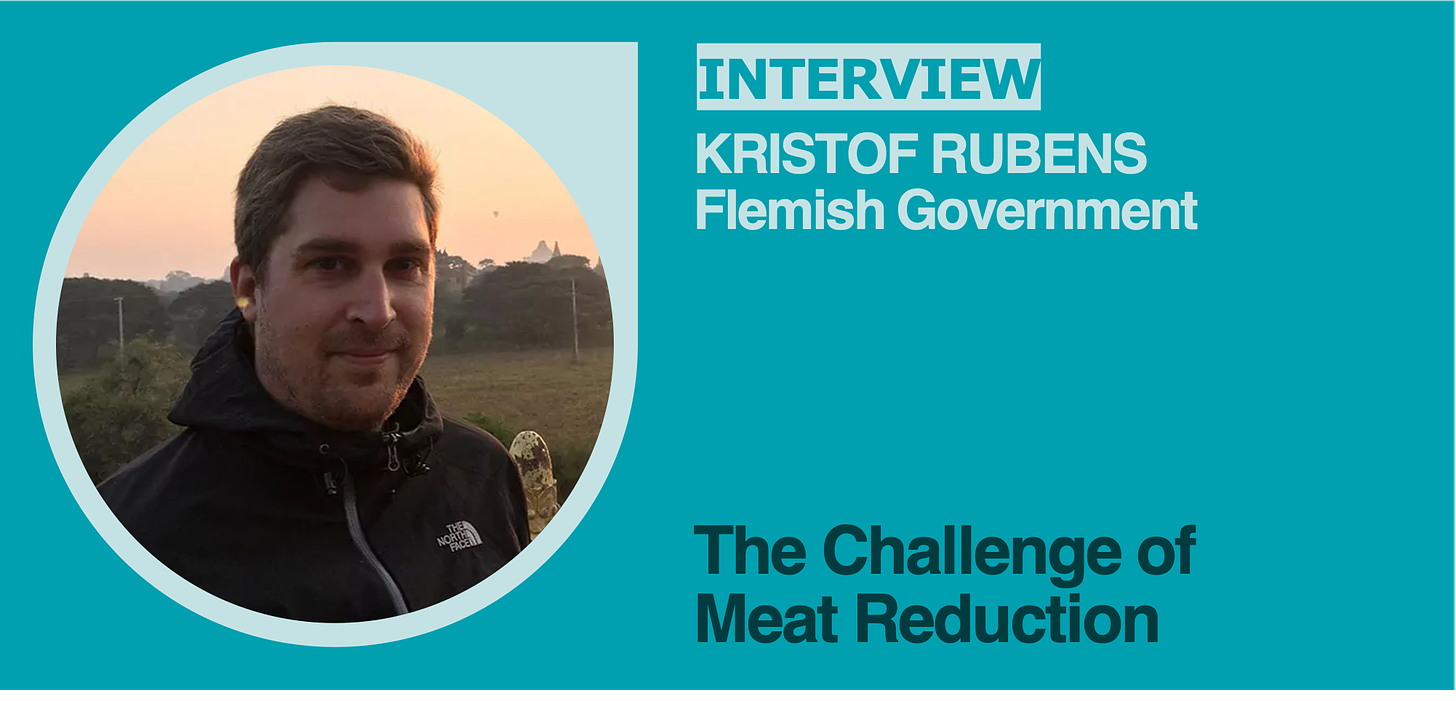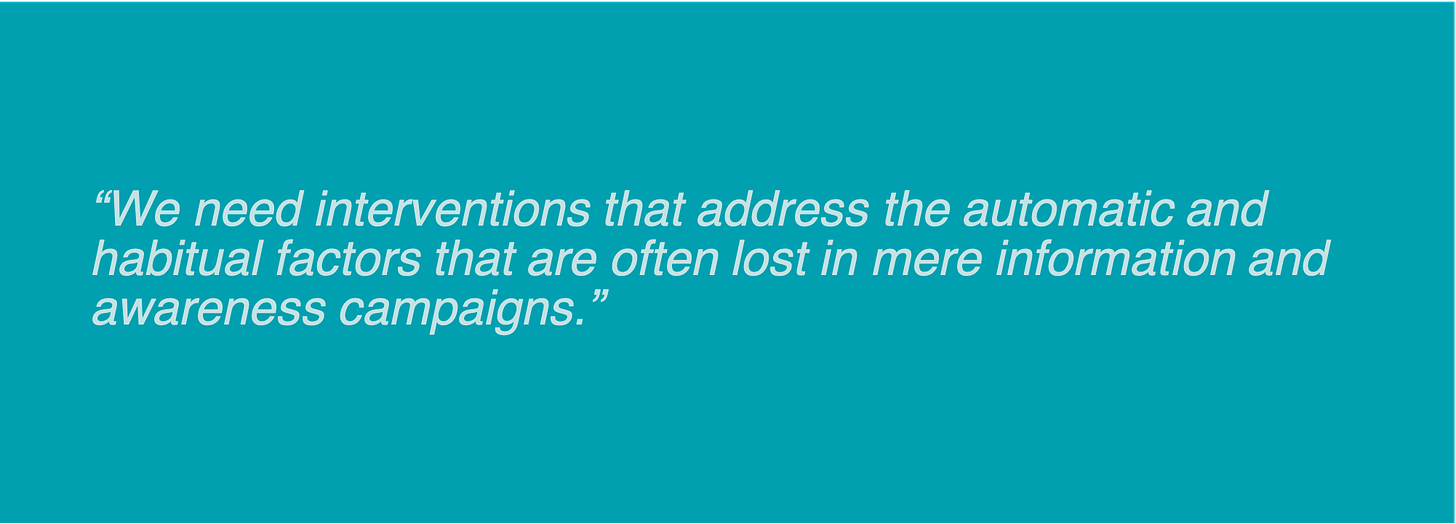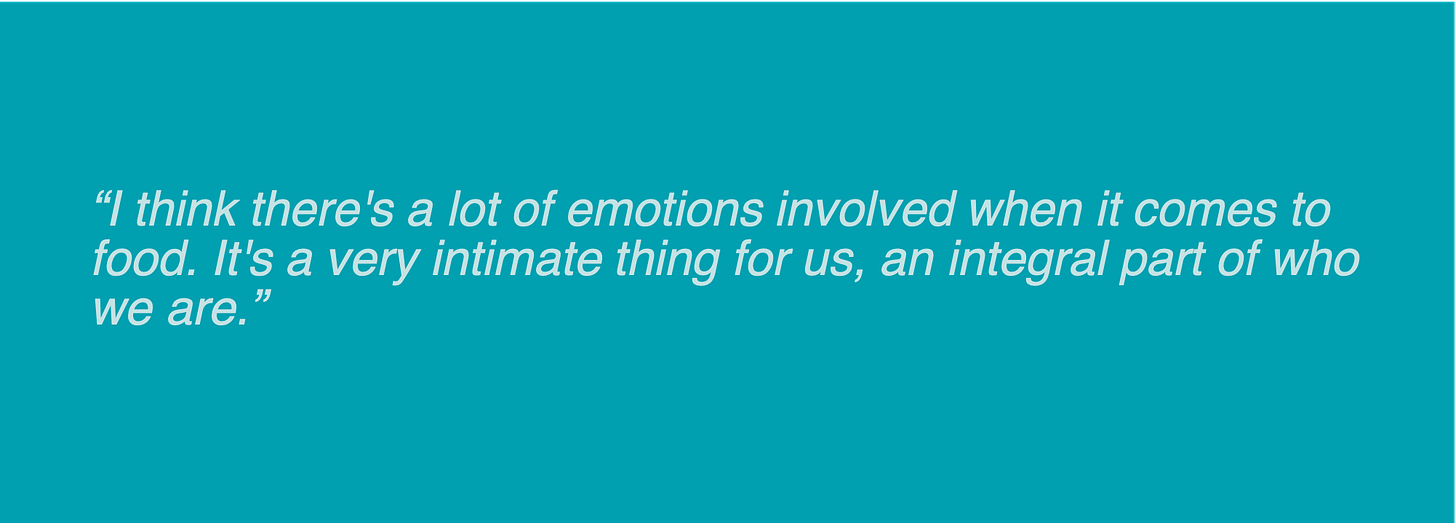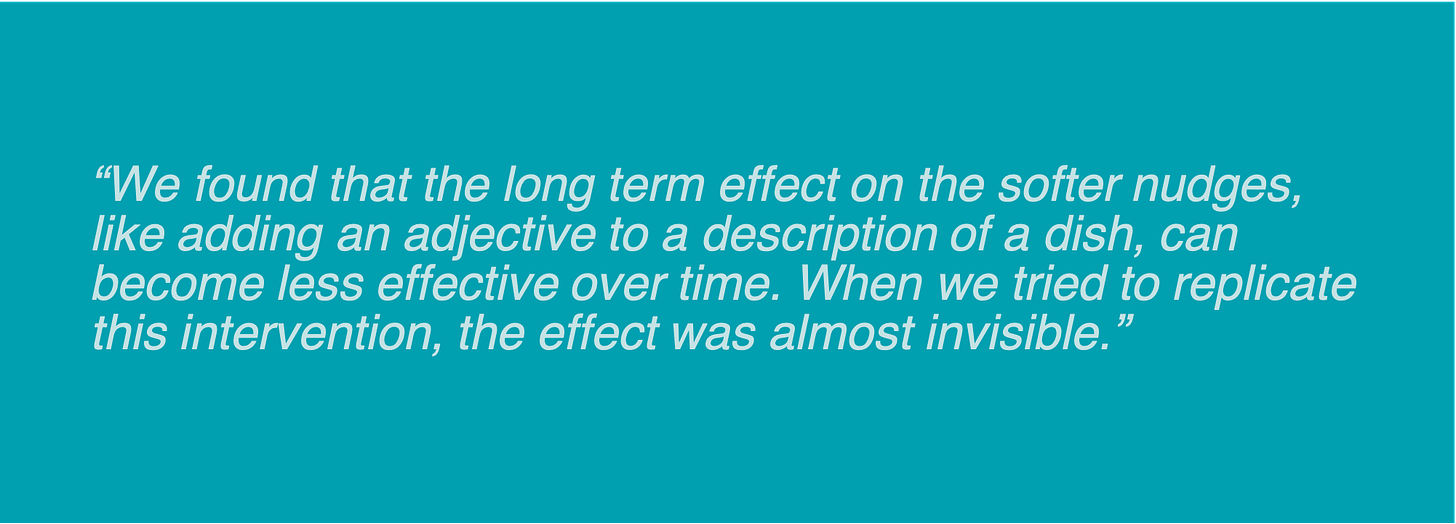INTERVIEW - The Challenge of Meat Reduction
Kristof Rubens is a policy advisor specialising in environmental food consumption and the green economy at the Department of Environment & Spatial Planning of the Flemish Government. In the context of his work on sustainable food consumption, he became very interested in behavioural insights and in their applications. In this interview, he shares some of his recent experience with meat reduction initiatives.
BEHAVEN — Hi Kristof, can you tell us about your area of expertise?
KRISTOF RUBENS — Sure! I'm a trained economist and political scientist. I work for the Environmental Department of the Flemish government in Belgium. My main focus area is sustainable consumption, mainly sustainable food consumption. We address the ‘what’ and ‘how’ of this issue. Firstly, what is sustainable food consumption, what does the science say and, in which direction should we be heading? Also, what are the typical things that are particular about our food habits in Belgium or Flanders? These questions are the starting point of what we do.
Secondly, the ‘how’ question is something that has seen quite an evolution during the years that I've been working for the Flemish government. For several years, we tried to gather people’s opinions, learn from them and integrate them in our interventions towards sustainable food consumption. But as we know from behavioural science, that's only the tip of the iceberg. There is a big difference between what people think or say they will do and what they actually do.
About four years ago, I started looking into the potential of behavioural insights in terms of creating interventions and actions towards more sustainable food consumption patterns. As a policy advisor, I wanted to know how we could translate this theory and knowledge into something more practical? It is important for us to drive change in consumption patterns so that the change is long-term and sustainable. Addressing these questions is the main focus of my job right now.
Great, thanks! In your opinion, what is the role of structural changes (retail, restaurants, etc.) compared to the role of individual-level changes? How would you compare interventions targeting the two?
I don't believe in the 'either or' approach. I think it's a combination of factors. Communications and awareness campaigns are the kinds of projects we often do as a government. But those in themselves are insufficient to drive large-scale changes. We need every actor in the food system to move towards sustainable food consumption patterns. Municipalities, retailers, health institutions, producers, even influencers.
Also, we now are more inclined towards using behavioural science because we ran into some obstacles in our classical role as informers or campaigners. Take the example of littering. I know we have had a running campaign in Flanders every year for the last 10 to 15 years to tackle this issue, but the littering problem is still very much there. We need to have interventions that address the same issue but on a different level. We need interventions that address the automatic and habitual factors that are often lost in mere information and awareness campaigns.
Are there other kinds of challenges that get in the way of this shift towards a sustainable diet?
We realise that at the government level, we do not have the entire solution. The solution here doesn't relate to sustainability or health alone but both of them.
We often lack very strong instruments to formulate the right solutions. Food consumption behaviours are an everyday aspect of our lives, and they’re not that easily influenced. When do we try to influence them, for example by taxation, things get tricky. In a small region such as Belgium or Flanders, we often observe spill-over effects i.e., a tax implementation in Belgium could drive consumers to get groceries from just across the border. This makes the implementation of conventional solutions like taxation a lot more complex. We need a European solution to this issue.
Meat is at the heart of food culture and with it comes attachment. Have you come across any specific challenges when it comes to reducing meat consumption?
I think there's a lot of emotions involved when it comes to food. It's a very intimate thing for us, an integral part of who we are. So I think, as a government when we try to influence that behaviour or present guidelines on how you could eat healthier and more sustainably, it often comes across as threatening and is perceived with a lot of emotions. I think that's one of the biggest obstacles that changing food behaviours tend to have.
We are all consumers and we tend to believe we know what's best. However, there is a silver lining here. Food also brings a sense of community to people. Organising food events is a great idea to get people to talk about different kinds of foods and grow deeper connections. So, while challenges persist, so do opportunities.
Is there any specific behavioural science method or intervention that you found to be especially effective in encouraging sustainable diets?
We did all kinds of different interventions, and we did them both in the short and long terms. The short term was for about one month and the long term was nine months in total. While I'm not a scientist, we did what I like to call ‘hard nudges’ and ‘soft nudges’.
The soft nudges included well-established techniques like creative naming of products to advertise them better and increase their attractiveness. An example would be adding the term 'succulent' to food products to emphasize the flavour aspect of it. We also tried hard nudges which involved the placement of products in supermarkets. We found this to be a very strong technique. Placing products on eye-level, where people tend to look more often, had a very high effect on consumers. This effect was higher than the soft nudge of creative naming.
In another trial, we positioned fruits and vegetables differently in the supermarket based on their seasons. What we observed was that people tend to associate certain products to specific seasons, in which case the nudge was less effective. For instance, pumpkins are associated with autumn and cauliflowers are perceived to be wintery and so draw less attention during summer. When the association of a type of fruit or vegetable with the season was low, the nudge had a big effect.
That's what's really interesting. Not only is the type of intervention important but also when the intervention is carried out and the type of product itself.
Did you find any differences between the short-term and long-term study results?
In general, we found that the intervention did work in the long term study. There was no learning curve when we implemented the intervention. The effect didn't level off so that was a good thing. The difficulty however was that although we had the same researchers, approach and retailers, replicating studies was not that straightforward. The big effect that we had on the short term study was not that easily replicated, even when we tried different stores (as supermarkets have a standardised layout). There was some differences between the two studies wherein the effects on the long term study were not as high.
Moreover, we found that the long term effect on the softer nudges, like adding an adjective to a description of a dish, can become less effective over time. When we tried to replicate this intervention, the effect was almost invisible. Replication is tricky but I think it's a reality we have to face when we translate theory into practice and upscale certain interventions.
Implementing food-based interventions are challenging. When implementing those on meat reduction, have you ever come across backlash from farmers or meat producers? If yes, how do you handle a challenge like that?
This is a very sensitive subject indeed. The stakeholder dialogue on meat consumption is very difficult. There's a big gap between how we perceive it from an environmental perspective and how producers perceive it.
The Flemish agricultural sector produces meat at a very high-efficiency rate and there's a lot of economic interest in it. That being said, meat can be produced as efficiently as possible but there is still going to be a gap between plant-based alternatives and meat options. To the producers, communicating messages of environmental impacts such as focusing more on the production of plant-based alternatives often comes across as telling them that they are not doing enough for the planet or that their production method is not as effective as it should be. As farmers, they have an emotional connection to what they do and are proud of their heritage. This then quickly becomes a sensitive topic and often results in backlash, resulting in the side-lining of environmental concerns that the communication efforts were based on.
In my opinion, it's never an 'either or’ solution in these kinds of situations and so dealing with them effectively remains a challenge. However, it is important to note that we are not suggesting an omission of meat consumption but rather a reduction.
Apart from the nudges and information campaigns you talked about, are there any other behavioural science tools you use in your work?
We are currently working on a product where we're looking into the storytelling aspect of food. What are the stories and feelings surrounding food? In their journey of protein transition (eating more meat or less meat), what challenges do people encounter?
We are collecting around 2,000 stories across Flanders and are trying to generate insights based on these stories. We aim to identify challenges and the contexts in which these various challenges occur, the emotions associated with the process and so on. Since food is an emotional concept, storytelling is a way to tap into those emotions, connect with people and gain valuable insights into behaviour change.
However, this project in my view is a part of the jigsaw. The conventional surveys, the existing behavioural insights and this project of story-based insights, I visualise these three large components to be part of the complete behavioural spectrum of consumers. This should hopefully provide us with some good insights and a basis to guide our interventions.
That's a very interesting concept! Lastly, in line with our discussion today, do you have any books or papers that you would like to recommend?
Slightly away from the behavioural science perspective and more towards food consumption, I thoroughly enjoyed this book titled ‘Sitopia’ by Carolyn Steel. It’s about how we as consumers are disconnected from food, lack the understanding of its sources and are obsessed with buying convenience foods. It is a fresh perspective considering that it comes from an architect!
More about Kristof’s work (in Flemish): https://omgeving.vlaanderen.be/milieuverantwoorde-consumptie
Sitopia, by Carolyn Steel: https://www.carolynsteel.com/sitopiabook







